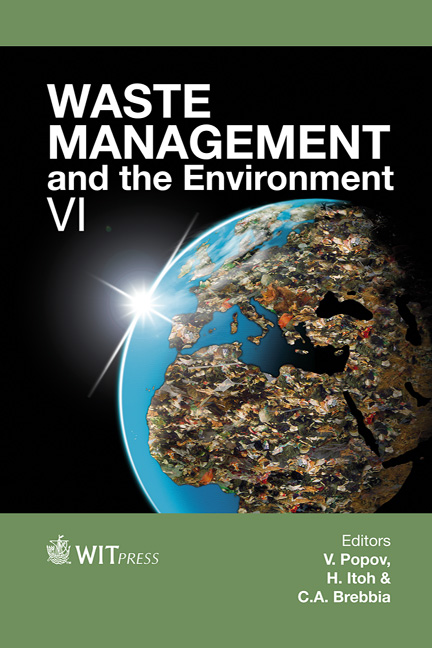Effect Of Phenol Concentrations On The Condensation Reaction During The Liquefaction Of Waste Woody Materials With Phenol
Price
Free (open access)
Transaction
Volume
163
Pages
12
Page Range
355 - 366
Published
2012
Size
2,656 kb
Paper DOI
10.2495/WM120321
Copyright
WIT Press
Author(s)
Q. Wang, N. Mitsumura, Q. Chen, P. Apar, Q. Qian, L. Gui, H. Niida, H. Kurokawa, K. Sekiguchi & K. Sugiyama
Abstract
The wood liquefaction technique using phenol is the developing method to utilize the waste woody materials for phenolic resin. However, the condensation reaction is one of the problems for popularizing the wood liquefaction technique. The lowering of the phenol concentrations in the wood liquefaction process is thought to be the cause of the condensation reaction. To find the reason and examine our hypothesis, woody meals (sawdust) were liquefied under the different conditions using phenol in the presence of sulfuric acid as a catalyst. Under the intensive liquefaction conditions such as higher reaction temperatures and more catalyst contents and smaller particle sizes of woody meal, remarkable condensation reaction was observed. It was found that the phenol concentrations were approximately 8% lower at the end of the reaction and became stable when the condensation reaction took place. It was indicated that the lowering of the phenol concentration suppressed the liquefaction reaction and prompted the condensation reaction. However, it was considered that the wood liquefaction also almost stopped when the condensation reaction was hardly observed. According to all results, it is suggested that the cause of the condensation reaction is not only due to the lowering of the phenol concentrations but also due to the decomposing of liquefied woody constituents into low molecules under the intense liquefaction. Keywords: waste woody materials, liquefaction, phenol, condensation mechanism, high performance liquid chromatography.
Keywords
waste woody materials, liquefaction, phenol, condensation mechanism, high performance liquid chromatography.





